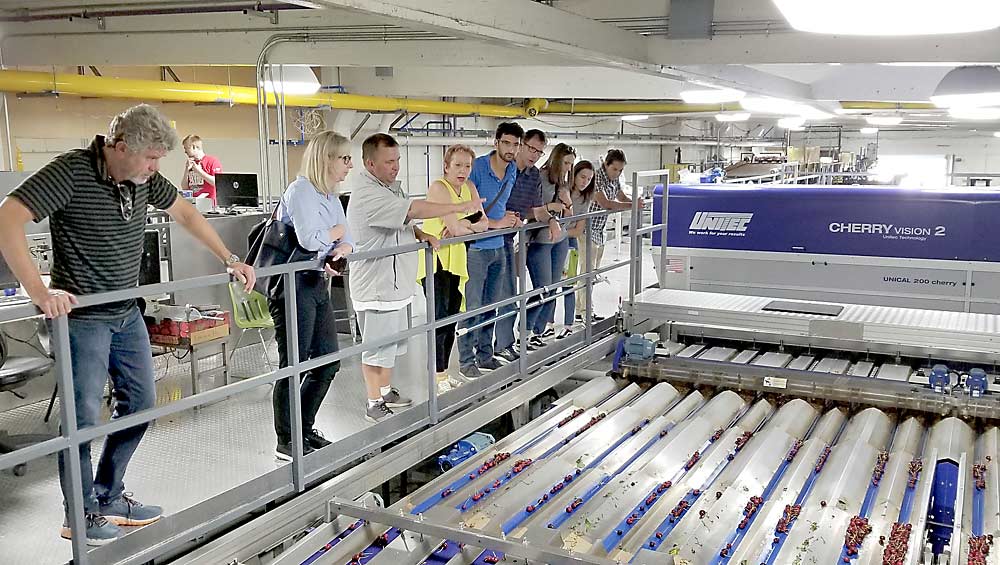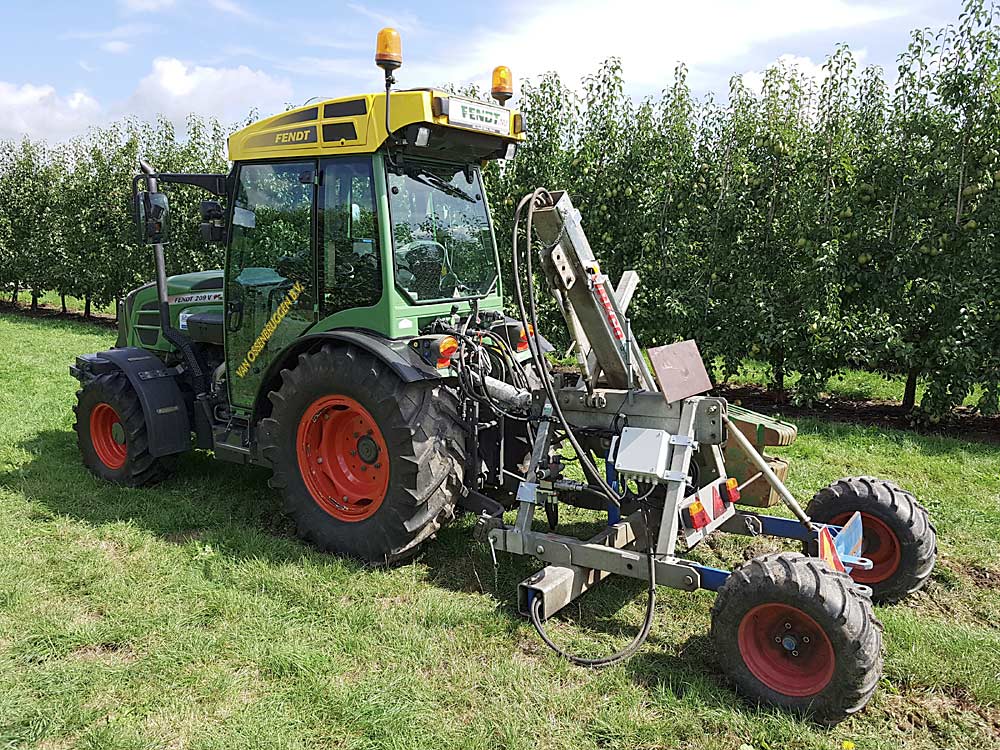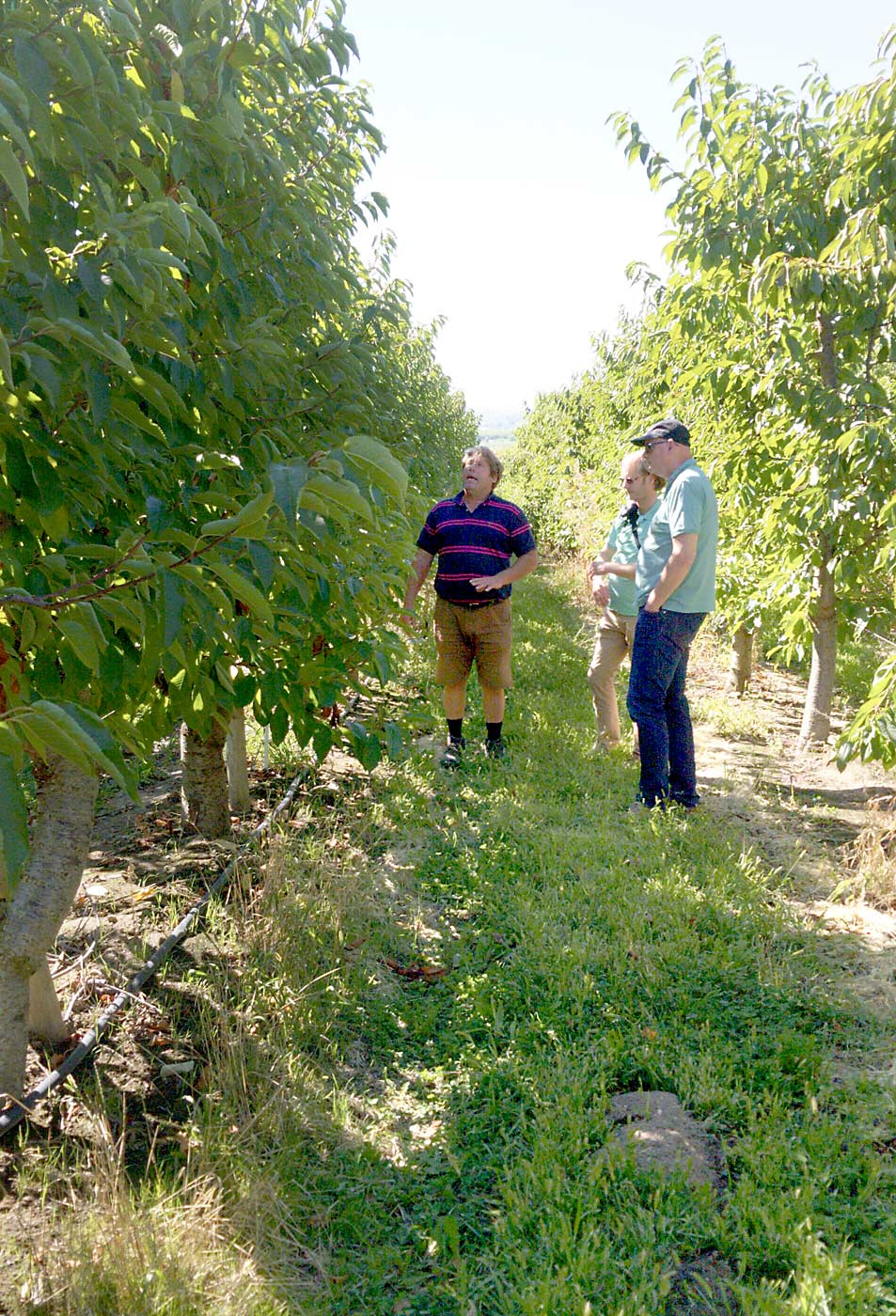
Pear growers in the Netherlands keep a keen eye on the development of apple picking robots in Washington and California, hoping that as the technology advances, it will be adapted for pear orchards as well. Meanwhile, U.S. growers want to learn from the automated tools Dutch and other European growers have begun testing.
On both of these fronts, and many others, “we can learn from each other,” said Peter Frans de Jong, a horticulture researcher at Wageningen University and Research in the Netherlands. Rather than spend time and money to duplicate research efforts for orchardists who face the same problems with rising labor costs, a new “Orchard of the Future” collaboration between Washington, California and Dutch research and industry groups aims to share and build on each region’s existing efforts.
Forming collaborations to spur innovations is Marcel van Haren’s specialty. He leads the agriculture and food division at FME, an organization of over 2,000 Dutch technology companies that helps companies work with stakeholders to address industry needs and seek grant funding for research and development.
“We look in the food chain where we can make smart connections,” he said. “It’s always about creating the right consortium.”
He and colleague Jacqueline van Oosten plan to organize the Orchard of the Future collaboration along the lines of a similar model they use in the Netherlands, which they call a triple helix — university, government and companies working together — to drive innovation.
“If it’s a business-wise approach, it’s more likely the innovations will be adopted,” van Oosten said. Scientists benefit from working with the companies that will commercialize tools, and tech companies benefit from working directly with growers as products are developed.
Ines Hanrahan, director of the Washington Tree Fruit Research Commission, said she sought a partnership with the Dutch specifically because of this public-private model to find innovative solutions to labor challenges facing orchardists.
“They are doing what we are envisioning: bringing groups of companies and scientists together,” she said.
Given the shared challenges in orchard systems, she asked if Washington could join in on the orchard section of the AgTech Summit collaboration between the Dutch government and the University of California and Western Growers. Having experienced leaders from FME to facilitate the collaboration will be a huge asset to the process, Hanrahan said.
“We need technologies that work across irrigated ag sectors and yield a return on investment,” she said. “We see our goals align, and we have created aligned goals.”

Collaboration in action
The Orchard of the Future project will tackle four areas of innovation: sensing, data management, automation and orchard design, van Haren said. Small work groups will meet regularly to discuss industry needs and potential technological solutions, plan research projects, apply for grant funding and work together over the coming years.
They expect to build on existing research efforts, including the Dutch government-funded Fruit 4.0 project, which seeks to advance automation and data-driven farming for fruit growers, de Jong said. The name comes from the view that smart and automated technologies are the fourth industrial revolution. The Dutch Fruit Growers Organization laid out their priorities in a technology road map in 2016, de Jong said.
“The end goal of course is a multifunctional robot, but we need the spinoffs first. We need some successes on the way to that robot,” he said. The eventual success of orchard robots will build on sensing, automation, data management and analysis advancements that will all progress in a feedback loop as each field relies on the others.
De Jong shared two ongoing projects from the Fruit 4.0 effort in a webinar with Orchard of the Future collaborators: precision blossom thinning and robotic root thinning, both based on imaging.
His precision blossom thinning research used a sensor platform imaging system to assess the variability of bloom in an orchard, now down to the tree level. This imagery is used to make a task map, which is fed to a precision sprayer that turns the nozzles on and off to adjust the thinning sprays to the needs of each tree, he said.
“So, we thin only the flowers that need to be thinned,” he said. Right now, the task map writes a prescription for each tree, but the next step involves spraying the upper or lower part of the tree differently, as needed. And as sensing technology for pests improves, the same approach could allow growers to spray only the hot spots for pests such as aphids or mites.
In another study, the researchers employed drone imaging to map canopy vigor so that a tractor with an automated root pruning blade could follow a task map based on the vigor.

Hanrahan and researchers from Washington State University’s Center for Precision and Automated Agricultural Systems have applied to be partners in the next round of the grant funding for Fruit 4.0, she said.
Meanwhile, de Jong will partner with robotics professor Joe Davidson from Oregon State University and biological engineering professor Manoj Karkee from WSU in a project funded by the Washington research commission to use a sensor system to measure tree nitrogen status to inform precision nutrient application.
Collaboration should speed up the process of research and development of technologies such as these, van Haren said, and make the most of the limited resources for investment in specialty crop research. •
—by Kate Prengaman






Interesting to see the group examining Italian sorting equipment in the first photo :)